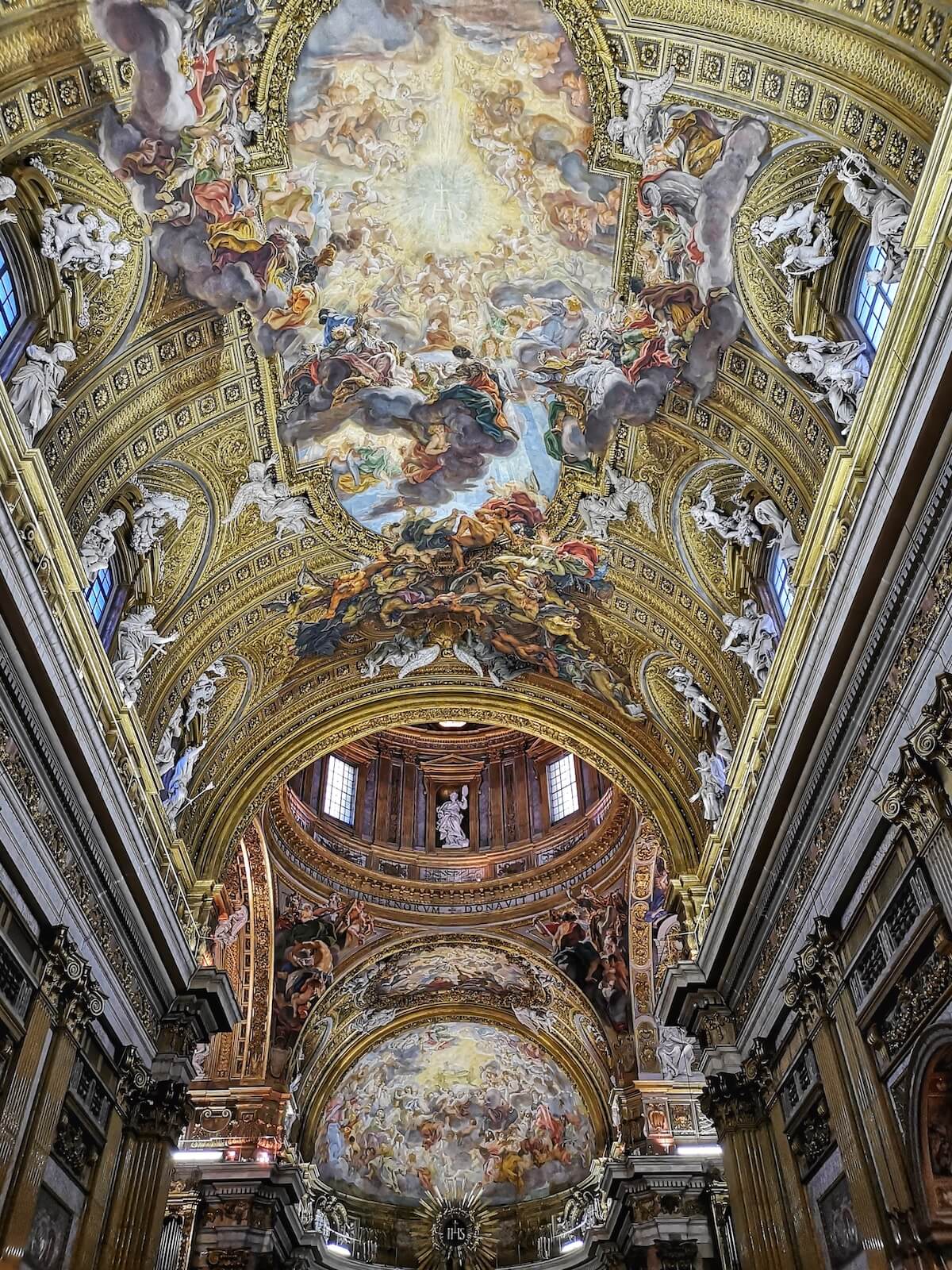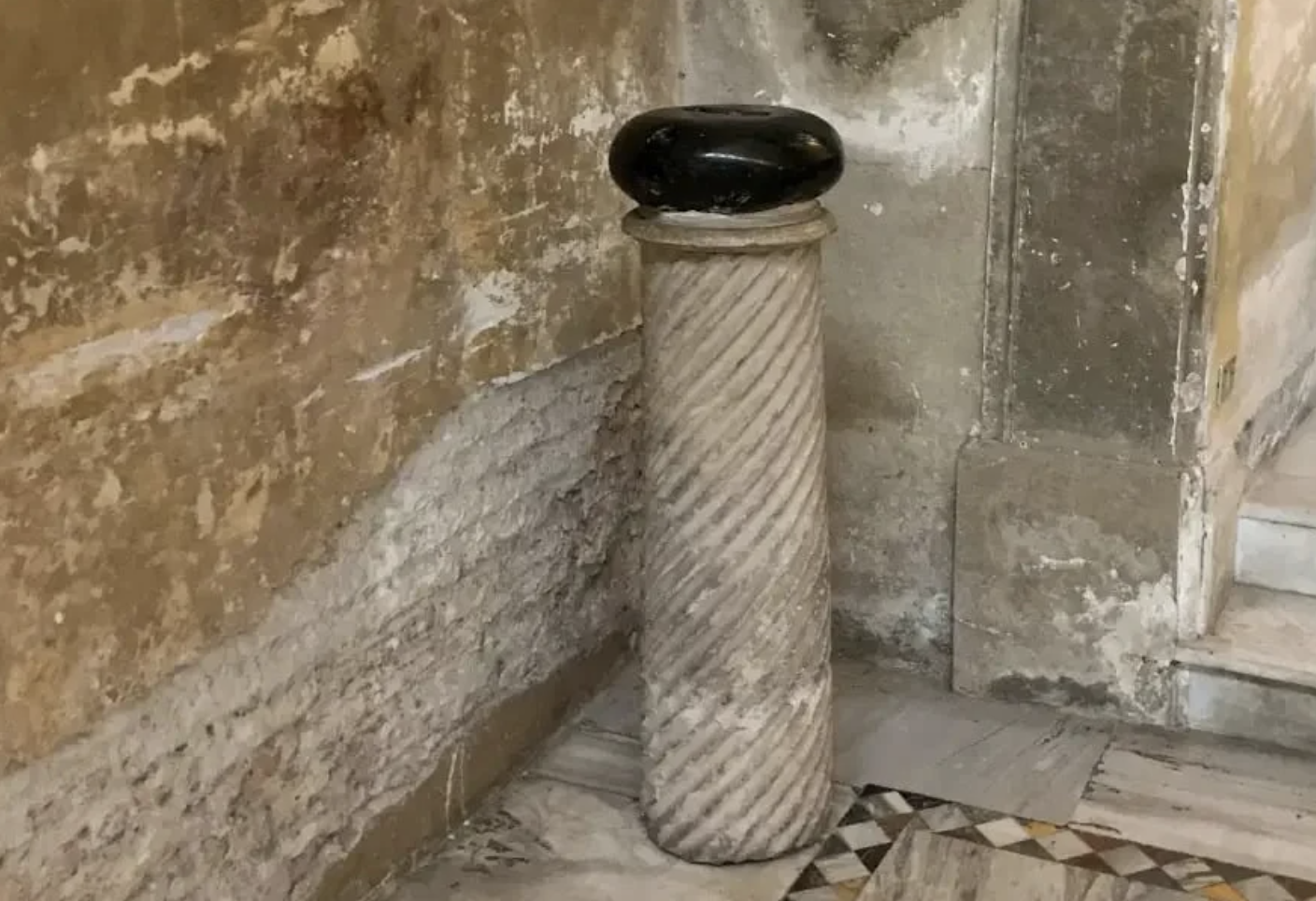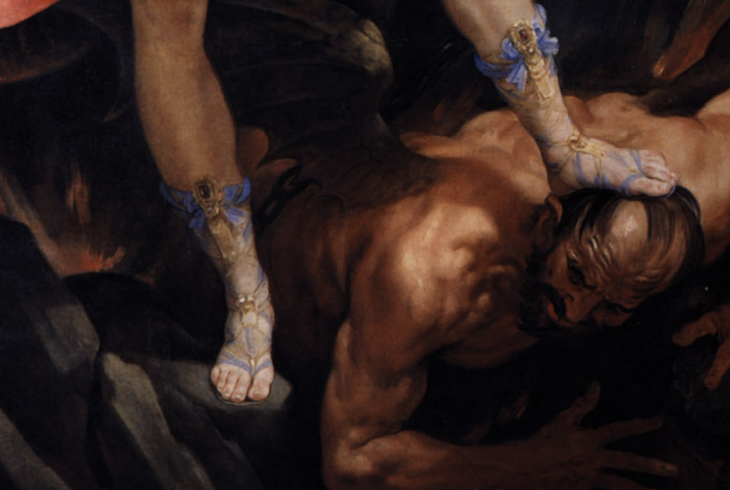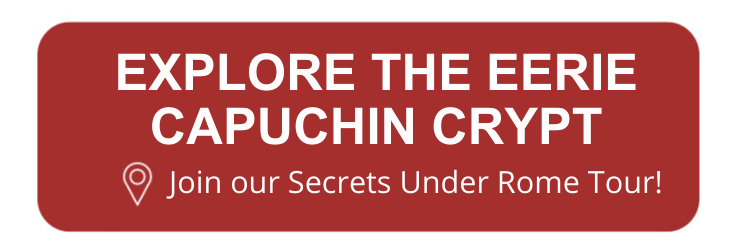Rome is the traditional home of the Catholic Church. The city became the "rock" on which Saint Peter built the Early Church, and for centuries, it formed the core of the Papal States with the Pope at its head. Even today, the Vatican sits at the heart of this ancient city, which still boasts over 900 churches. But Rome is far older than the Church, and tales of the Devil are as old as time. So, in a place as holy as Rome, can you still encounter the Devil?
The Devil's Chair - A Curious Ruin in a Roman Suburb

Tucked away in a nondescript modern suburb of "Quartiere Africano" in Rome's north-eastern suburbs, you can find a curious ancient Roman monument with an even more curious name—"La Sedia del Diavolo," or the Devil's Chair.
Once upon a time, this pile of tumble-down ruins was, in fact, an ancient Roman mausoleum. Built in the 2nd century AD, the tomb was the final resting place of Aelius Callistion, a freedman of the emperor Hadrian. Like most ancient tombs, it was built along one of the roads leading into the ancient city, the via Nomentana.
With the fall of the Empire, the mausoleum began to decay and fall apart. Over the centuries, as the monument crumbled, it began to take on a curious shape - and by the Middle Ages, it started to look like a massive throne of the kind you might see in a cathedral.
However, this enormous throne seemed otherworldly, far too large for mere mortals. The tomb's haunting presence was further amplified because it was located outside the Medieval city. Back then, the wild countryside was a dangerous place, full of thieves, bandits, and vagabonds, who were known to camp and take shelter in the ruins. The glow from their campfires and the echo of their laughs lent the Devil's Chair an even more ominous, menacing glow in the Roman night.
The Pantheon - The Devil and the Dome
The Pantheon is nearly 2,000 years old, so it's to be expected that there are a few unusual legends about this ancient Roman temple. Among the best is the Medieval legend about how this pagan place of worship became a Christian church.
Built by the emperor Hadrian in 125 AD, this ancient temple did not become a church until 609 AD, when the Byzantine emperor Phocas gifted it to Pope Boniface IV. In thanks, the Pope allowed him to erect the column of Phocas in the Roman Forum, the last Classical addition to the heart of the ancient city.
According to legend, the Pope wanted to Christianize the ancient temple and rid it of the seven demons who were said to reside inside. He felt the best way to do this was to perform an exorcism before opening the mighty bronze doors.
When they finally opened the doors, six of the demons trapped inside flew out. However, the final demon (perhaps the Devil himself) was said to be so large and fierce that he couldn't escape through the doors. Instead, he burst through the top of the dome, punching a hole in the middle. They say the Pope blessed the dome's oculus and ordered 28 cartloads of martyrs' remains to be brought from the catacombs and interred under the Pantheon's floor.
Of course, this story belongs to Roman folklore and was likely invented in the 16th century. Remember, though, the official name of the Pantheon today is the "Basilica di Santa Maria ad Martyres," the Basilica of Mary and the Martyrs. For every legend, there is a grain of truth.
Another local legend tells of the legendary magician Pietro Bailardo, who, in the 15th century, made a pact with the Devil. He agreed to trade his soul for a magical book. But he decided to trick the Devil instead and retreated inside the Pantheon for safety. By this time, the Pantheon was a Church, and the Devil couldn't enter. In frustration, the Devil tore around the Pantheon in furious circles, and his angry sprinting carved a moat around the ancient temple.
Of course, the ditch represents the changes in street levels over the centuries and has nothing to do with a demonic dash!
The Gesù - When the Devil and the Wind Went for a Walk

There is one spot in Rome that always seems fresh and breezy, even in the dead heat of summer: the square in front of the Church of the Gesù, the principal Church of the Jesuits in Rome.
They say the windiest spot in the Eternal City is a phenomenon that owes thanks to the Devil himself. The story, recounted by Stendhal, goes that the Devil and the Wind were taking a stroll one day together through the city of Rome. Upon arriving at the Gesù, the Devil excused himself and told the Wind that he had to pop into the church for a minute. He never emerged, and the Wind has been waiting for him ever since, blowing back and forth.
Another version of the tale tells us that Lucifer became incredibly jealous upon hearing of this grand Jesuit church. He decided that if he could not possess the Gesù, he would instead destroy it. So, in the dead of night, he arrived on a demonic chariot pulled by the Wind. However, upon arrival, he was utterly mesmerized by the church's beauty. The Devil lingered, forgetting the time. When Dawn arrived, Lucifer taken by surprise, fled, leaving his chariot, pulled by the Wind behind, who remains, awaiting the Devil's return.
But what is the real reason behind the windiest place in Rome? The Gesù stands at a crossroads - five roads, the Corso Vittorio Emanuele II, Via del Plebiscito, Via del Gesù, Via d'Aracoeli, and Via Celsa all converge at the church, making this a naturally windy spot.
Although, what do they say about the Devil at the crossroads?
The Devil's Stone at Santa Sabina - When the Devil Lost His Temper

One of the oldest churches in Rome is atop Aventine Hill. The Church of Santa Sabina was first built in the 5th century AD, and it retains its original pristine state even today (with just a few 9th-century additions).
Stepping inside its spartan interior, you really step back in time. This ancient Basilica hides a few secrets. One such secret concerns the Devil and St Dominic. Walking through the church, you will notice a few things; one is a smashed marble tombstone in the floor of the central nave. You'll also see a polished black basalt stone with three deep indentations gouged into its surface.
In the 13th century, the Pope gifted the Basilica to the Dominicans, and this is where St. Dominic lived.
According to tradition, one day, the saint was lying prostrate on the tombstone of Christian martyrs in a deep state of meditation and prayer. Then, the Devil came to call. Infuriated by the saint's holiness, he tried to distract St. Dominic, shake his faith, and lead him to sin. But all of Lucifer's efforts were in vain. St. Dominic continued to pray.
In frustration and fury, he picked up a black basalt rock and hurled it at Dominic. The rock missed, hitting the marble beside him. Still, the saint did not move, deep in prayer. Exasperated by Dominic's devotion, the Devil made a hasty retreat.
The stone ("Lapis Diaboli"/Devil's Stone) was later perched on a small twisted column in the corner of the Basilica as a relic—a testament to the power of faith. The three deep scratches in the stone are said to have been made by the claws of the Devil.
In reality, the tombstone was likely damaged by Domenico Fontana during renovations in the 16th century. And the mysterious "Lapis Diaboli"? Well, the ancient black stone is likely to date to the ancient Roman period. Known as a "Lapis Aequipondus," it was probably an ancient Roman weight measure. The grooves on the stone were probably for grappling hooks, suggesting its original use as a counterweight.
However, the stone may also have a darker history rooted in fact. It seems the stones may have also been used as instruments of Christian torture and martyrdom during the Roman period.
The grooves could have accommodated iron hooks or lead rings. These could have been used around the necks of martyrs when they were thrown in wells or even strapped to the ankles of hanging bodies. Indeed, several of Rome's most ancient churches have similar stones, including Santa Maria in Cosmedin and Santa Maria in Trastevere. The distinctive stones also appear in the graphic and gruesome martyrdom frescos at the Basilica of Santo Stefano Rotondo. So perhaps stories of the Devil are not quite as far-fetched as they seem?
A Painting of the Devil with the Face of a Pope?

At the end of the fashionably buzzing via Veneto in the heart of Rome, you find the church of Santa Maria della Concezione, more popularly known as the "Church of the Capuchins."
The Capuchin friars are famous for their vow of poverty and are instantly recognizable in their simple brown robes. Today, their church is most famous for its macabre crypt - which boasts the bones of nearly 4,000 of their brethren, arranged in a bizarre and morbid artistic display. It's a shocking sight.
The secrets of the Capuchins' crypt are now well known; however, the humble church above hides another unusual treasure. Venture inside and peek into the first chapel on your right. Here, you will find a stunning work by the Baroque artist Guido Reni. Long before the rebel Caravaggio became fashionable, the works of Guido Reni were one of the highlights of a visit to Rome. Today, his works go almost unnoticed.
The painting shows the archangel, Michael, vanquishing the Devil. He looms over Lucifer, pressing his foot into the Devil's skull, who is pinned to the ground, defeated.
The painting is undeniably beautiful, but the gossip and politics behind its creation are positively intriguing.
In the 17th century, two of Rome's most powerful families were the Barberini and the Pamphilj. The two families were fierce rivals, constantly jostling for power in both the temporal and spiritual realms. Indeed, both families boasted popes among their family ranks. When Reni was painting, the Pope was Urban VIII Barberini. Urban and the Barberini family commissioned Reni to paint the archangel Michael for the church of the Capuchins.
Legend has it that Reni heard the Pamphilj cardinal, Giovanni Battista, had slandered him. Incensed, he altered his commission to include the cardinal in the most unflattering way. Suddenly, the face of the defeated Lucifer came to bear an uncanny likeness to the Pamphilj cardinal! Naturally, the Barberini Pope, the rival of the Pamphilj family, didn't object. Indeed, he quietly reveled in the joke.
When the painting was finally unveiled, the Pamphilj cardinal was furious. But Reni defended his artistic vision, telling the cardinal that the Devil had appeared to him in a dream, so he knew what he looked like. How could he be faulted if the cardinal bore a striking likeness?!
The saga became even more uncomfortable several years later when the Pamphilj cardinal was elected to be Pope Innocent X. However, the painting remains, and it hangs in the church to this day.
Devilishly Good - "Alla Diavola" a Tasty Flavor Bomb to Look Out For
All this talk of the Devil works up a fiendish appetite. Rome is not renowned for its spicy food; they even use far less garlic than many of us would expect. However, if you see " Alla Diavola" on the menu, you're in for a spicy treat.
"Alla Diavola" or "Al Diavolo" means in the Devil's style; it's a cheeky, mischievous turn of phrase to describe some of Italy's tastiest dishes. When talking of the Devil, we can think in terms of heat, spice, or both.
"Pollo all Diavola," in Rome, is chicken cooked over a hellish flame, generously seasoned with black pepper and some chilli flakes. It's traditionally grilled with a weight on top for that maximum chargrilled flavor. It's a summer staple on Italian barbecues - best enjoyed with a glass of wine among family and friends.
"Pizza alla Diavola" is an essential phrase to have in your pocket during your Italian travels. In Italy, pepperoni pizza doesn't exist. You'll get a pizza with bell peppers if you ask for that. Peppers are delicious, but it's not pepperoni. Italian salami, or pepperoni, is made with lots of spices, so you need to ask for "Pizza alla Diavola." Is it good? Of course, it is! Once you eat pizza in Italy, you'll be ruined for life.
Don't say: "I've ruined my diet."
Do say: "The Devil made me do it."
MORE GREAT CONTENT FROM THE BLOG:
- The Best Vatican Tours to Take in 2024
- A Pilgrim and Tourists Guide to Jubilee 2025
- How to Climb the Dome of St. Peter's Basilica
- 7 Things You Need to See in St. Peter's Basilica
- Art and Faith in the Vatican: The History of St. Peter's Basilica
- Visiting St Peters and the Vatican Museums: A Practical Guide
- A Guide to the Vatican Gardens






